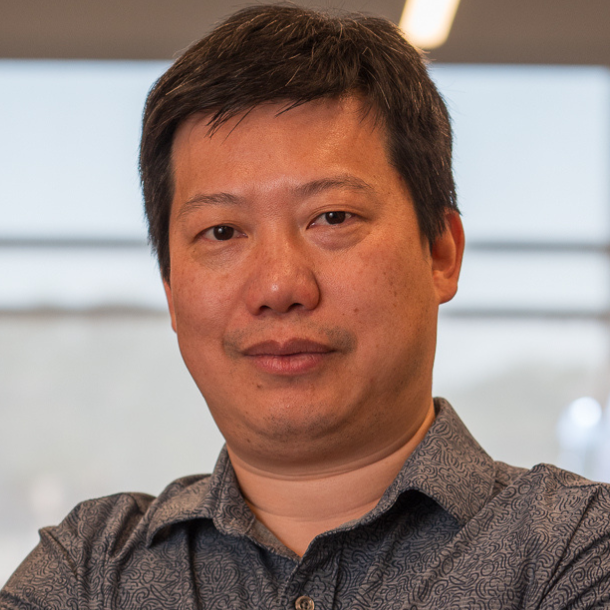
About the Edith and Peter O’Donnell Award in Engineering
The Edith and Peter O’Donnell Awards were established in 2006. They are named in honor of Edith and Peter O’Donnell, who were among Texas’ most devoted advocates for excellence in scientific advancement and STEM education. The awards recognize rising star Texas researchers who are addressing the essential role that science and technology play in society and whose work meets the highest standards of exemplary professional performance, creativity and resourcefulness.
The Edith and Peter O’Donnell Award in Engineering honors Texas engineers at academic institutions with a $25,000 honorarium, profile video and an invitation to present their research at the TAMEST Annual Conference.
Most Recent Engineering Recipient

The world runs on lithium-ion batteries, but their dependence on scarce resources, like lithium, cobalt and nickel creates environmental challenges. These critical minerals require intensive mining and are not renewable. To combat this, Dr. Yao’s research focuses on discovering new materials and storage mechanisms for batteries based on abundant materials while creating energy storage solutions that reduce reliance on critical resources and have a positive environmental impact.
Dr. Yao and his team started by looking at materials available at scale and developing methods to design and synthesize new materials with tunable electrochemical responses and transport properties similar to those in lithium-ion batteries. By learning to control reactivity at interfaces, his team demonstrated sustainable batteries that outperform traditional battery technologies.
Building on advances in materials development and mechanistic understanding, his team developed aqueous batteries, which use water as an electrolyte, making them inexpensive, nonflammable and abundant. By utilizing materials such as sodium and magnesium, which can be extracted from seawater and are largely available in the United States, his team is creating renewable energy storage solutions that are cheaper, safer and less energy intensive to produce without worry of supply chain issues.
Past Engineering Recipients
For his revolutionary imaging technology that seeks to make the invisible visible.
Learn More >
Jamie Padgett, Ph.D., Rice University | 2023
For her life-saving research in infrastructure sustainability and resiliency in hazard-prone regions. Dr. Padgett’s research enhances public safety and provides new methods for multi-hazard resilience modeling. Instead of looking at a single threat, like how a bridge will perform in an earthquake, her research looks at multiple hazards or multiple threats that a system might be exposed to over time.
Learn More >
Jodie L. Lutkenhaus, Ph.D., Texas A&M University | 2022
For her innovation and development of redox active polymers for metal-free energy storage and smart coatings. By developing new molecular-scale characterization methods, Lutkenhaus discovered fundamental connections among polymer dynamics, properties and performance.
Learn More >
Watch Dr. Lutkenhaus’ Award Acceptance >
Guihua Yu, Ph.D., The University of Texas at Austin | 2021
For his revolutionary use of nanotechnology and conductive polymer-hydrogels to provide solutions to two of society’s biggest challenges: water sustainability and energy storage. Dr. Yu’s approach of looking at organic nanomaterials and understanding structures down to their smallest scale has led to the creation of new multifunctional polymeric nanostructures and hybrid organic-inorganic nanomaterials with unique physical properties that improve efficiency and function.
Learn More >
Jeffrey Rimer, Ph.D., University of Houston | 2020
For his seminal breakthroughs using crystals to help treat malaria and kidney stones. His approach of utilizing non-classical pathways of crystallization has led to great strides in the design of new materials, which can be translated into commercial practices.
Learn More >
Watch Dr. Rimer’s Award Acceptance >
Hal S. Alper, Ph.D., The University of Texas at Austin | 2019
For finding sustainable ways to create new molecules that can be used for plastics, drugs and other products that typically require petroleum products as a feedstock. His work has the potential to significantly reduce pollution in the chemical industry by reducing and reusing waste.
Learn More >
Watch Dr. Alper’s Award Acceptance >
Delia J. Milliron, Ph.D., The University of Texas at Austin | 2018
For advancing technology that could revolutionize how windows are used in modern architecture. She has developed a new material that when applied to windows with a thin coating can dynamically control the amount of infrared light (and the heat that comes with it) that passes through.
Learn More >
Watch Dr. Milliron’s Award Acceptance >
Andrew K. Dunn, Ph.D., The University of Texas at Austin | 2017
For developing technology that allows us to see things we haven’t seen before in the human brain. Through his laser speckle imaging technique, we can now see blood flowing in the brain in real time, allowing us to see where clots are forming. This allows neurosurgeons to easily identify areas suffering from reduced blood flow and prevent strokes.
Learn More >
Watch Dr. Dunn’s Award Acceptance >
Andrea Alù, Ph.D., The University of Texas at Austin | 2016
For his contributions including seminal work on cloaking and invisibility, pioneering advances in optical nanocircuits and nanoantennas, magnetic-free non-reciprocal devices for sound, radio-waves and light, and giant nonlinear response in optical metamaterials.
Learn More >
Watch Dr. Alù’s Award Acceptance >
Haiyan Wang, Ph.D., Texas A&M University | 2015
For her innovative research at the frontier of nanostructured materials in the areas of high temperature superconductors, microelectronic and optoelectronic devices.
Learn More >
Watch Dr. Wang’s Award Acceptance >
Thomas M. Truskett, Ph.D., The University of Texas at Austin | 2014
For fundamental contributions in three areas—self-assembly at the nanoscale, dynamics of confined liquids and structural arrest of complex fluids—that are important for applications ranging from biomedical imaging to the delivery of therapeutic proteins.
Learn More >
Watch Dr. Truskett’s Award Acceptance >
Li Shi, Ph.D., The University of Texas at Austin | 2013
For his pioneering contribution to the fundamental understanding of nanoscale thermal transport and thermoelectric energy conversion processes, and for his application of the scientific discoveries to enhance thermoelectric energy conversion devices and thermal management of nanoelectronic and energy storage devices.
Learn More >
Watch Dr. Shi’s Award Acceptance >
Michael W. Deem, Ph.D., Rice University | 2012
For fundamental theoretical work that brought new tools and ideas to vaccine design, mathematical biology and nanoporous materials structure.
Learn More >
J.-C. (Jung-Chih) Chiao, Ph.D., The University of Texas at Austin | 2011
For his pioneering achievements in RF MEMS and polymeric millimeter wave components enabling low-loss reconfigurable radar systems, and implantable telemetric micro-sensors and stimulators for clinical applications in medicine.
Learn More >
Stephen W. Keckler, Ph.D. & Douglas C. Burger, Ph.D., The University of Texas at Austin | 2010
For inventing and demonstrating a new class of technology-scalable computer architectures.
Learn More >
Brian Korgel, Ph.D. (NAE), The University of Texas at Austin | 2009
For his invention of the use of size-selected metal nanocrystals as seeds to grow semiconductor nanowires with controlled nanoscale diameter.
National Academy of Engineering: 2018
Learn More >
Jennifer L. West, Ph.D. (NAM, NAE), Rice University | 2008
For pioneering research in biomaterials engineering and advancing the fields of tissue engineering and bionanotechnology.
National Academy of Engineering: 2016
National Academy of Medicine: 2023
Learn More >
Antonios G. Mikos, Ph.D. (NAM, NAE), Rice University | 2007
For his insightful application of chemical engineering principles to biomolecular engineering as exemplified by pioneering contributions to tissue engineering, biomaterials science and more.
National Academy of Medicine: 2012
National Academy of Engineering: 2012
Learn More >
Yueh-Lin Loo, Ph.D. (NAE), The University of Texas at Austin | 2006
For pioneering the field of using specially-designed plastics in conducting electricity with potential applications in medicine and electronics.
National Academy of Engineering: 2025
Learn More >

